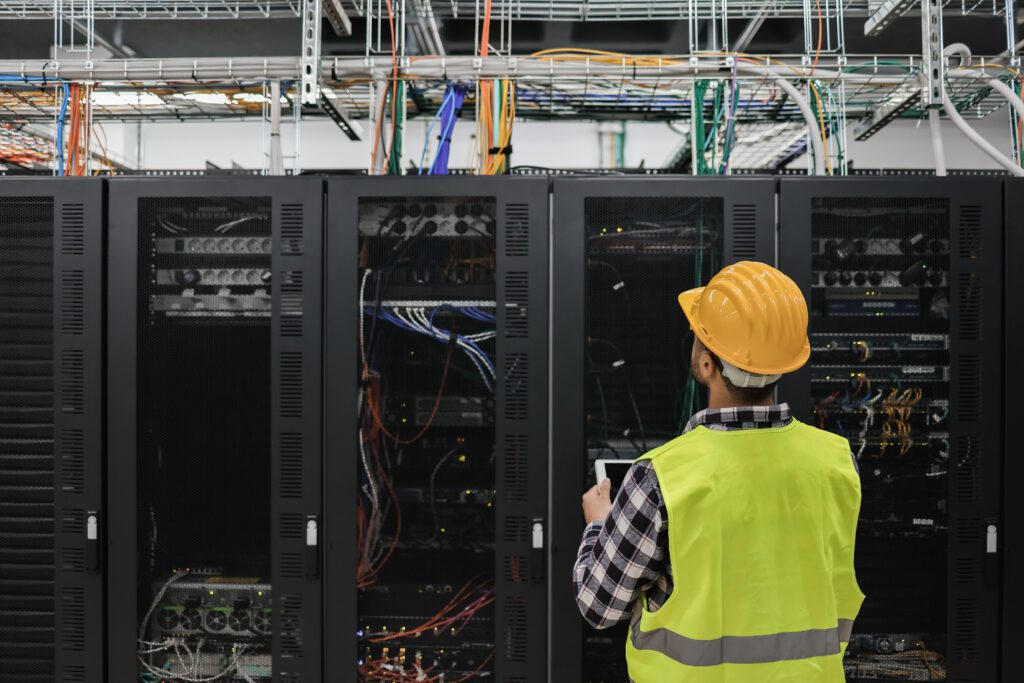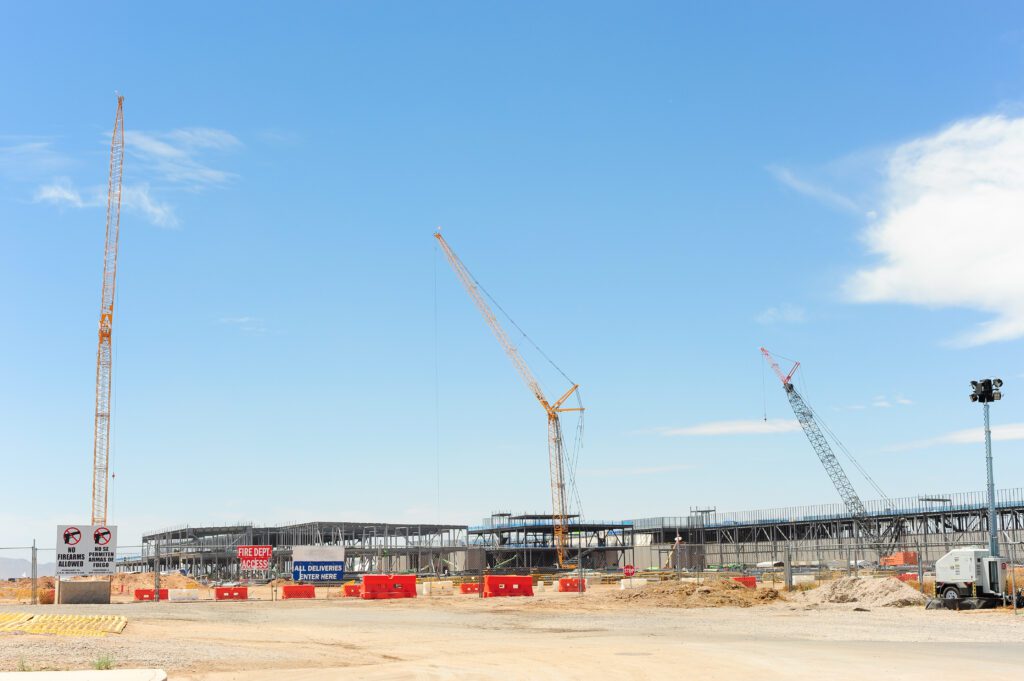May 2025
What’s Fueling the Data Center Boom? 5 Key Industry Insights

From “What’s Fueling the Data Center Boom? 5 Key Industry Insights” – BOMA International
As AI adoption surges globally, the data center industry is racing to expand while also grappling with a growing challenge: power availability. According to Data Center Frontier, the need for massive land and energy resources to support AI infrastructure is already creating conflicts with other urban development priorities. These tensions—and opportunities—took center stage at the JLL Data Center Forum this month, where industry experts outlined five key themes shaping the sector. Joining us to break down these emerging trends are Andrew Batson, Head of U.S. Data Center Research, JLL and Nick Schlanger, Director of Research Services at NAI Hiffman.
1. Extraordinary Demand
Driven by surging AI adoption and data usage, the data center industry is seeing record demand, with Deloitte forecasting that global data center electricity usage could nearly double from 536 terawatt-hours (TWh) in 2025 to approximately 1,065 TWh by 2030. Batson discusses this rapid expansion, noting that “the amount of data that we are generating as a society is increasing exponentially,” pointing out that the demand for data centers is increasing 20% every year, doubling ever four to five years. For those wondering why data centers are increasingly appearing in their neighborhoods, PwC provides a key explanation: they are being driven by technological breakthroughs—such as generative AI and other energy-intensive GPUs—that demand advanced cooling solutions. As technology continues to evolve and grow more complex, data center operators must adopt innovative design strategies that anticipate and accommodate ongoing change. Batson adds: “Internet traffic is increasing 20% annually, and a shift in lifestyles to streaming, ecommerce, cloud-based apps and AI are all driving data center demand. This is putting extreme pressure on developers to find land, secure power and construct data centers at a speed which keeps up with demand.”
2. New Trade Policies
Tariffs are another element raising concerns about potential cost increases and procurement delays in the data center industry. “Developers are navigating a complex environment — tariffs on key components, rising construction costs and mounting community opposition are all reshaping how and where data centers are built,” Schlanger says. A JLL report is optimistic, though, with experts anticipating a modest 5% rise in construction costs, with overall development and leasing activity remaining largely unaffected. Batson agrees: “Tariffs will increase the cost to construct data centers, maybe 5% to 10%, but it is not slowing down demand and development projects are proceeding and adjusting to added costs as necessary.”

3. Power Availability
Power constraints are now a major hurdle for data center development. According to the 2025 State of the Data Center Report, rack density continues to rise, jumping from 7kW/rack in 2021 to 16 kW/rack in their latest survey. As a result, 79% of their respondents stated that they expect rack density to grow further due to AI and performance workloads. Schlanger aligns with this perspective: “The data center industry continues to experience rapid growth, driven by surging demand from hyperscalers and AI workloads. Cloud adoption and enterprise digitalization remain strong tailwinds, but access to power has emerged as the defining constraint on new development. Markets like Chicago, Dallas and Northern Virginia are attracting increased attention due to their infrastructure readiness and grid reliability.” Schlanger raised an important point about infrastructure readiness and grid reliability. Echoing this, Batson noted, “Wherever there is power, data centers are being built. Even in places we would have never thought about 10 years ago like Mississippi or Alabama.” The Cushman & Wakefield 2025 Global Data Center Market Comparison underscored regions with record-setting pipeline growth, including Virginia, which is developing an impressive 15.4GW. The report also emphasized that in mature markets, land values remain a key factor—prompting increased interest in more cost-effective emerging locations such as Johor and Pennsylvania.
4. Energy Optimization
Sustainability is a growing priority in the data center industry, with companies exploring clean energy sources like solar and wind to meet rising power demands while reducing environmental impact. Experts provide their take on this topic:
Batson: “The largest data center operators in the U.S. have aggressive sustainability goals. Many of them are already running their U.S. portfolios on 100% clean energy largely through power purchase agreements for solar, nuclear and wind. Newer cooling technology has allowed data centers to reduce their water consumption down to near-zero which is helping to strengthen water scarce communities.”
Schlanger: “Sustainability and workforce development are top of mind. We’re seeing operators invest in liquid cooling, renewable energy and modular design — all while facing a talent shortage that will require an estimated 300,000 new workers globally by 2025.”
5. Talent Shortages
Schlanger pointed out an important piece of the data industry puzzle: talent shortages. According to Pro Source, the market is facing challenges in retaining workers, partly because of a shortage of specialized skills—particularly in areas like cloud computing, AI integration and cybersecurity. Batson highlighted the advantages of pursuing a data center–focused career, noting that many roles are accessible to high school and college students without requiring an advanced degree. He also emphasized that the veteran community represents a strong talent pool for the industry. PwC also emphasized the importance of investing in training programs and workforce development initiatives to build the skills necessary to supporting ongoing expansion needed for large-scale facilities. Ultimately, strengthening workforce development is critical to sustaining the industry’s expansion.
About NAI Hiffman:
NAI Hiffman is one of the largest independent commercial real estate services firms in the US, with a primary focus on metropolitan Chicago, and part of the NAI Global network. We provide institutional and private leasing, property management, tenant representation, capital markets, project services, research, and marketing services for owners and occupiers of commercial real estate. To meet our clients’ growing needs outside of our exclusive NAI Hiffman territory, we launched Hiffman National, our dedicated property solutions division, which provides property management, project services, and property accounting services across the country. NAI Hiffman | Hiffman National is an award winning company headquartered in suburban Chicago, with more than 275 employees strategically located throughout North America.
About Hiffman National:
Hiffman National is one of the US’s largest independent commercial real estate property management firms, providing institutional and private clients exceptional customized solutions for property management, project management, property accounting, lease administration, marketing, and research. The firm’s comprehensive property management platform and attentive approach to service contribute to successful life-long relationships and client satisfaction. As a nationally bestowed Top Workplace, and recognized CRE award winner, Hiffman National is headquartered in suburban Chicago, with more than 275 employees nationally and an additional six hub locations and 25 satellite offices across North America.


